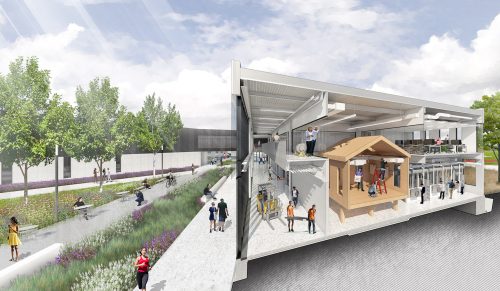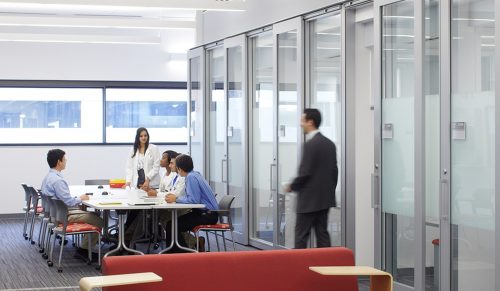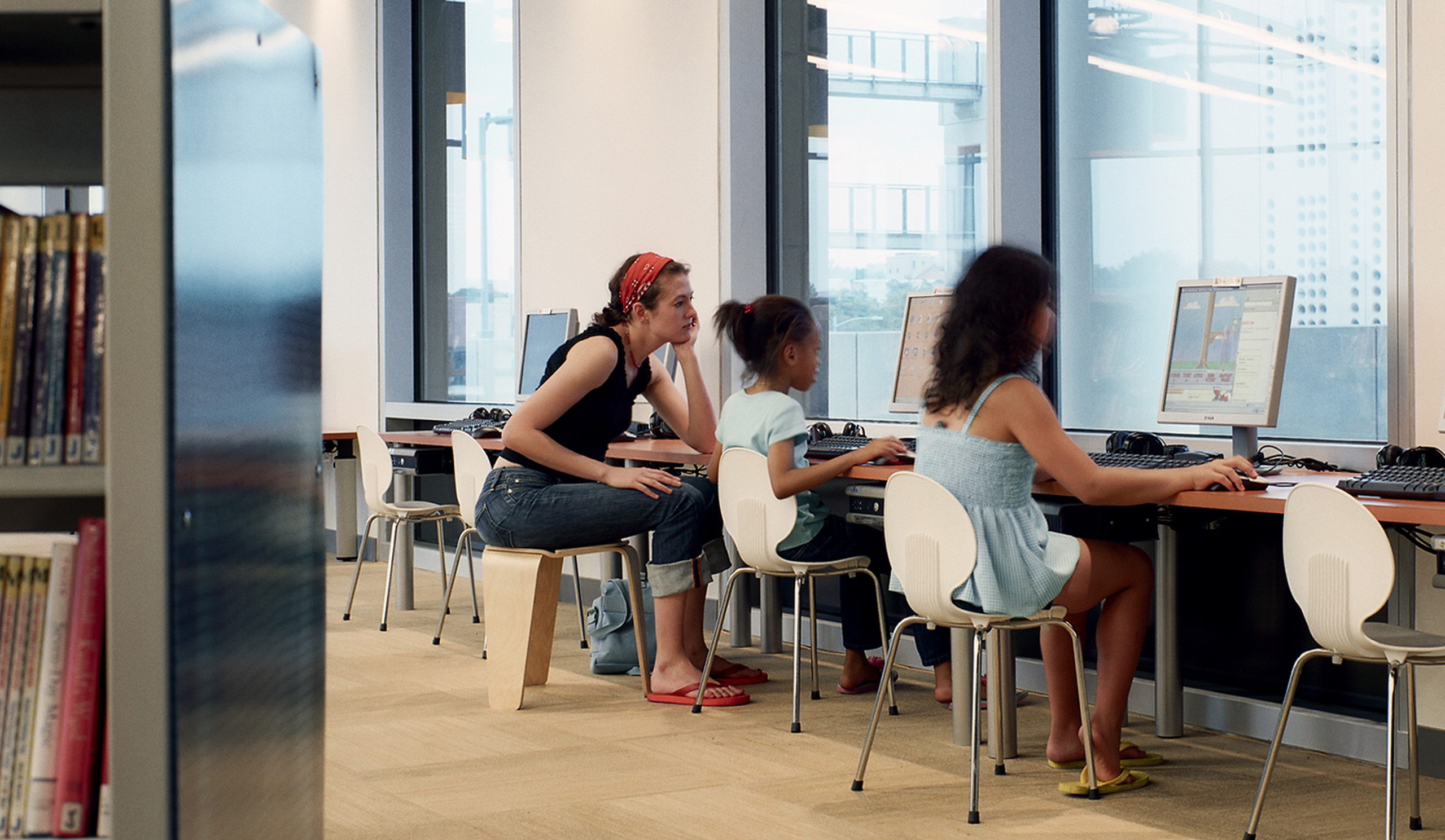
Reimagining the Library of the Future
Two seemingly opposing trends about the use of college libraries have recently emerged. First, gate counts have never been higher; more students are using the library than ever before. Second, the use of books and printed material — what many have assumed is the original purpose of the library — has never been lower.
These ideas are further elaborated and supported by additional trends identified in the evolution of libraries, the people they employ, and their role on campuses:
– A growing trend has seen institutions consolidate and merge their physical collections, often in an offsite, purpose-built storage facility. The benefits of this strategy are long-term preservation and the opening up of valuable square footage previously occupied by collections.
– The contemporary research library is positioning itself as a network hub of scholarly knowledge, which requires not only a physical presence, but a digital one as well. Digital networks also encourage cross-institute partnerships: Within the current climate of shrinking budgets and increased focus on digital collections, collaborations enable libraries to improve access to scholarly materials and engage in mission-driven cooperative projects.*
– The role of the librarian is evolving, increasingly being defined as that of a guide. Curation still matters, and finding the right resource in a sea of content is more challenging now than ever before. As stated in the white paper “Reimagining the Georgia Tech Library:” As our patrons grapple with new media, digital repositories, massive data sets, and open access, the Library is there to guide them with instruction, tools, experience, and vision.**
– There is an increasing need for “shallow end” services — checking out a VR headset from the library’s trove of gadgets, for example, or using a virtual classroom to practice instruction techniques. These needs are met by a cadre of individuals who have more in common with sales associates at the Apple Store than they do with traditional librarians.
– At the same time, the library remains a bastion of quiet reflection, and the generation of new knowledge requires both active exchanges and periods of individual study. A spectrum of space activity levels — noisy to quiet — is necessary to meet these varied modes of learning.
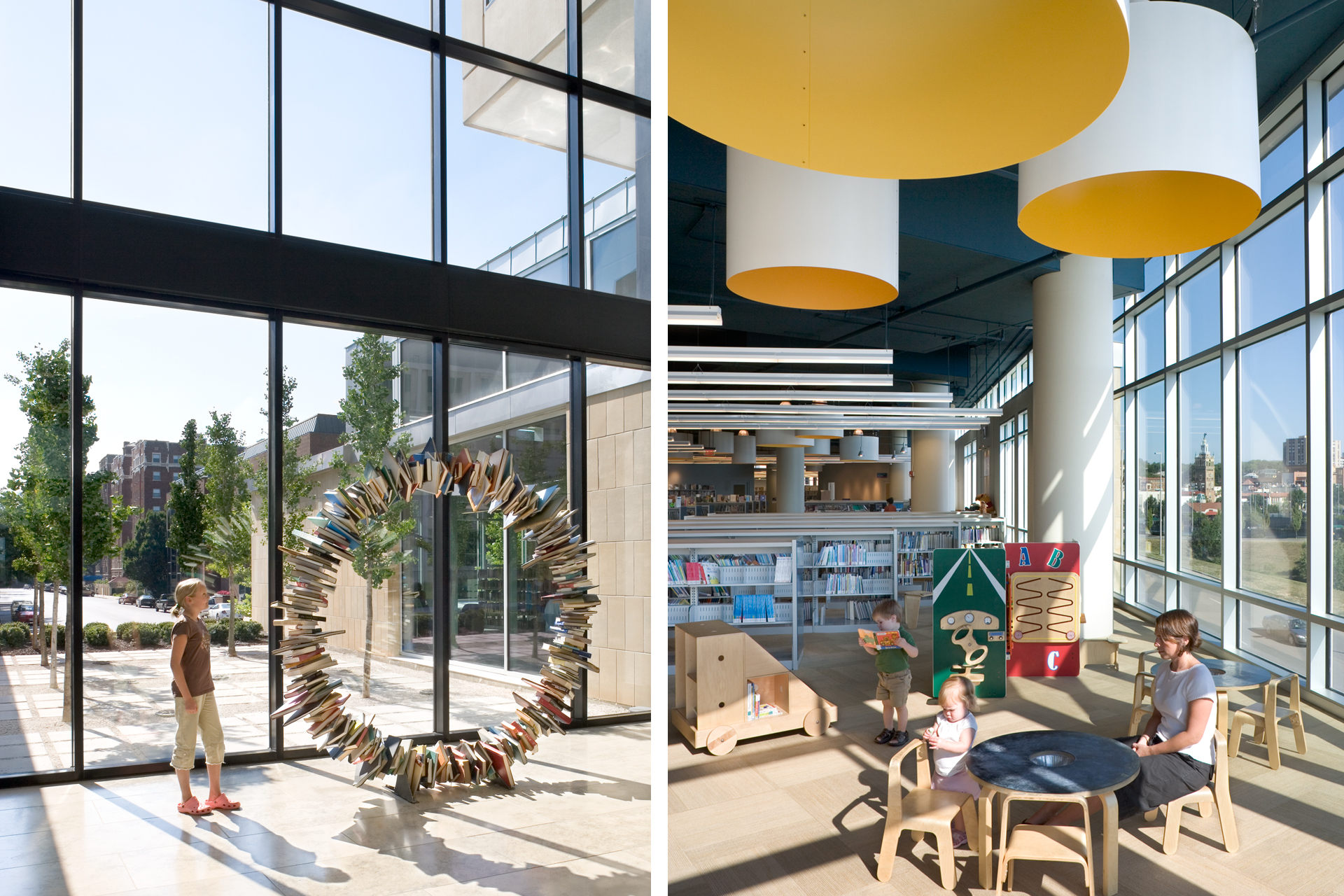 KANSAS CITY PUBLIC LIBRARY AND CHILDREN’S CENTER — PLAZA BRANCH
KANSAS CITY PUBLIC LIBRARY AND CHILDREN’S CENTER — PLAZA BRANCH
These trends challenge academic and research libraries at universities and institutions around the country to transform themselves into entities far more vital than storehouses for books, returning to their original purpose as a space for cultivating scholarly communities. Many opportunities for innovation may be found in the architectural response to these trends. The following areas comprise that response:
Long Life, Loose Fit
Change is a variable that can be accounted for in design. When spaces are configured with this in mind, they can more easily adapt to future needs. At the Robert E. Kennedy Library at Cal Poly in San Luis Obispo, California, the five-story Brutalist structure will undergo a significant renovation to enhance overall functionality for the 21st-century student experience. The programming process revealed opportunities to consolidate spaces for books, reorganize an indiscriminate network of study rooms, and provide open areas for interaction, all of which allow for future flexibility as needs continue to evolve.
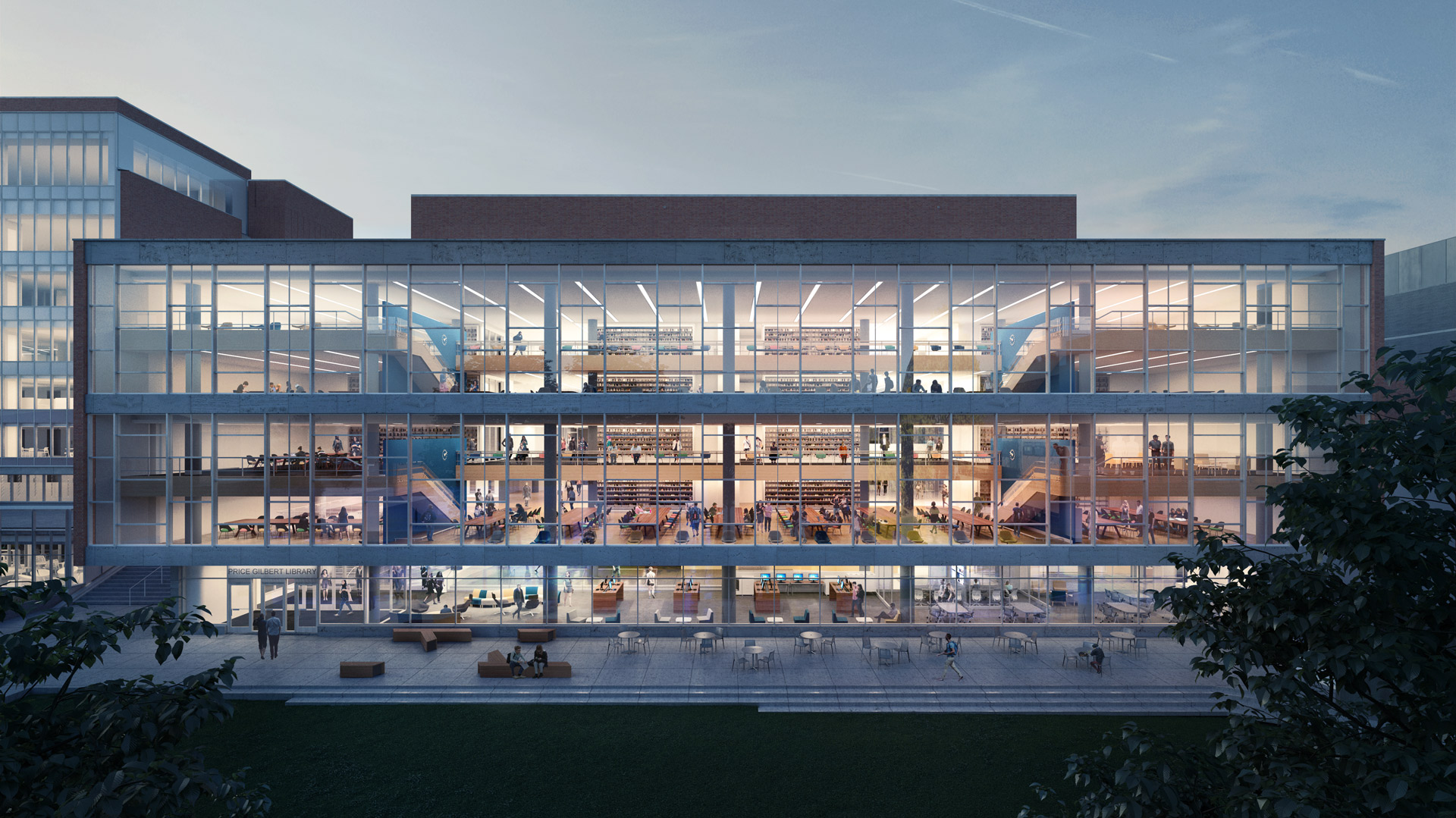 GEORGIA INSTITUTE OF TECHNOLOGY — PRICE GILBERT — CROSLAND TOWER LIBRARY RENEWAL
GEORGIA INSTITUTE OF TECHNOLOGY — PRICE GILBERT — CROSLAND TOWER LIBRARY RENEWAL
Spaces for People
Light and volume are the basic building blocks for people space. At the Price Gilbert — Crosland Tower Library at the Georgia Institute of Technology, creating generous volumes in a low, robust former stacks building has been central to that building’s transformation. These volumes have been placed on the north side of the building, near a new clear glass curtain wall, providing diffuse solar illumination, as well as views toward the campus and surrounding city.
Connection and Porosity
As the research library becomes more integrated with its surrounding network of scholarly knowledge, the library building can become a connected, visible, and porous venue for the sharing of knowledge. This implies multiple points of entry and exit rather than a singular point of control. It also means revealing the work that’s going on inside the building from the outside, and seeing the context of the interconnected outside world from within.
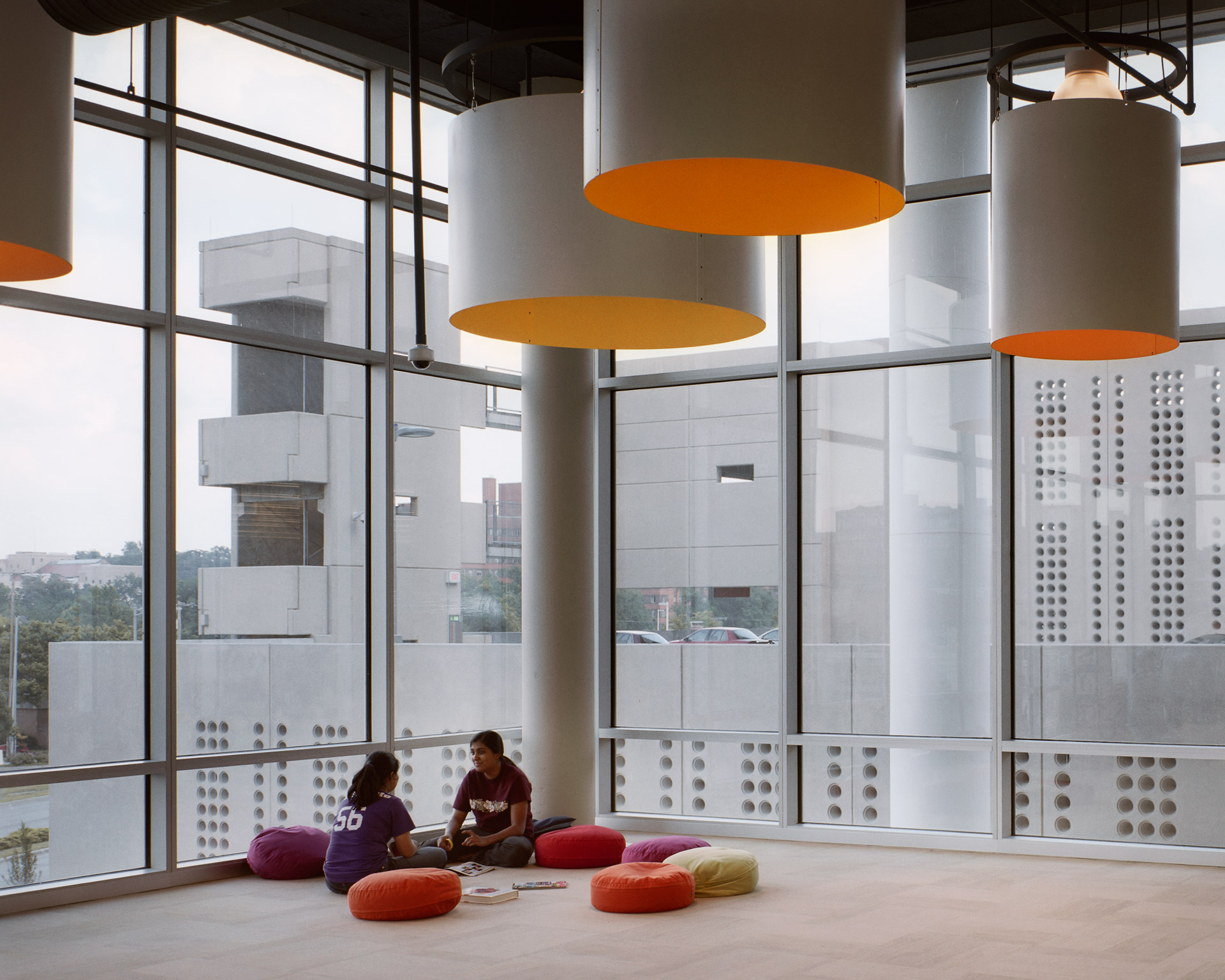 KANSAS CITY PUBLIC LIBRARY AND CHILDREN’S CENTER — PLAZA BRANCH
KANSAS CITY PUBLIC LIBRARY AND CHILDREN’S CENTER — PLAZA BRANCH
Integration of the Physical and Digital
The digital ether is ever-present, ubiquitous, and utterly invisible. A library is a place to reveal and to make the invisible visible. Doing so is sometimes pragmatic (as in virtual browsing) and sometimes artistic (as in an abstract installation).
As historian Shelby Foote put it, “A University is just a group of buildings gathered around a Library.” On most campuses, you’ll find the library near the geographical center, and this strategic physical location makes it an asset to the institution. Furthermore, the academic research library is a neutral space. These two qualities — centrality and neutrality — make the library the ideal venue for cross-disciplinary collaboration. A range of spaces can be provided to facilitate this productive interaction: places to gather, create, visualize, and share ideas. Identifying a readily available source of food and caffeine certainly helps, too.
